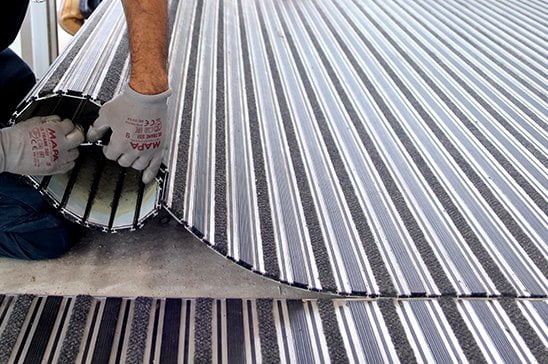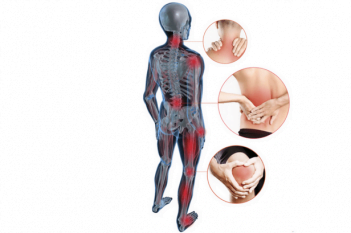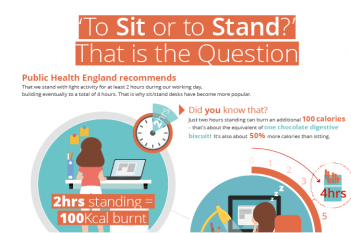In this article we explore how sitting and standing correctly can promote wellbeing in the workplace
The physical position we work in can have a number of health implications which could be avoided. Some of the key health dangers within the workplace are associated with both standing and sitting for long periods, which can result in Musculoskeletal Disorders (MSDs).
MSDs affect millions of workers across all types of employment sectors. They are the most common occupational disease within the EU, and can often result in long-term sickness absence. They are conditions which affect movement of the body. Areas affected include upper and lower back, neck and shoulders, hands and wrists, knees, calves and feet.
Quick facts
(source 5th European Survey on Working Conditions)
- 7% of workers suffer from backache
- 8% have muscular pains
- 5% complain of working in painful or tiring positions
- Over 45% of European workers complain of standing in tiring positions at work.
Many health professionals consider standing to be better than sitting for long periods of time, even though standing for long periods can have its own consequences.
In support of wellbeing in the workplace a panel of experts on behalf of Public Health England, have issued guidance that workers should get up to stand for at least two hours daily during a working day. The same experts also advise that prolonged static standing can be harmful.
Many ergonomists believe that we need to be taught how to sit properly and how to stand correctly.
What are the current recommendations to achieve wellbeing at work?
The key is to aim for a more balanced ratio of standing and sitting. When we stand for prolonged periods of time it is beneficial to be stood on a cushioned mat, which will absorb the impact of standing on hard surfaces, while being firm enough to offer the right level of support for the foot. Cushioned anti-fatigue mats promote subtle movement in the foot to assist circulation, which helps to overcome the problem of the body being in a static position.
Here are some tips on how your staff can stand more comfortably
Jobs involving prolonged sitting
- Stand up every 20-30 minutes.
- If a standing desk is available, use it in conjunction with an anti-fatigue standing desk mat, to make standing more comfortable. Each day try to increase standing time.
- Stand while on a phone call.
- Have standing/walking meetings.
Jobs involving prolonged standing
- Introduce anti-fatigue matting to decrease discomfort and the risk of MSDs.
- Try to move around rather than standing in a static position.
- Incorporate some ‘sitting’ rest time; possibly a sit/stand stool if practical.
- Evaluate footwear. Shoes should be comfortable, practical and have adequate arch and heel support.













